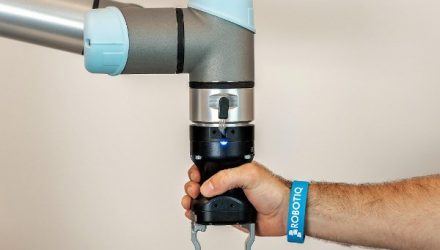Do collaborative robots always have to move slowly? No! Here are 5 safety critical applications which can boost your cobot productivity. Collaborative robots are safe, right? Well, yes. They are designed to be safe around humans. However, as our experts at the recent Robotiq User Conference discussed, they are not safe in all situations.
We don’t often think of hand-guiding as a safety-critical application, but it is.
Safety is important for all robot applications. You should always carry out a risk assessment, whether you are using a tiny tabletop cobot or a huge industrial manipulator. However, safety is especially critical for some applications.
You need to pay extra attention to safety whenever your application involves a human physically interacting with the robot. But, what applications are we talking about here?
Thankfully, the robotic standards give us some clues. There are 5 types of application which are safety critical with collaborative robots.
Why these applications?
First, I should explain why these 5 applications are so useful.
It’s quite normal to see collaborative robots running in a reduced speed mode. If you have seen a cobot demo (at a trade fair, for example), you have probably seen this mode in action. Because this is so common in demos, some people mistakenly believe that cobots can only move slowly. However, the true maximum speed of cobots is often similar to industrial robots.
Reduced speed mode is designed to keep the cobot within the safety limits as specified by the cobot standards (e.g. ISO/TS 15066). When the robot collides with a person in this mode, it won’t apply a harmful force to them.
The problem with reduced speed mode is that (obviously) it makes the robot move very slowly. This means that you sacrifice productivity for safety.








